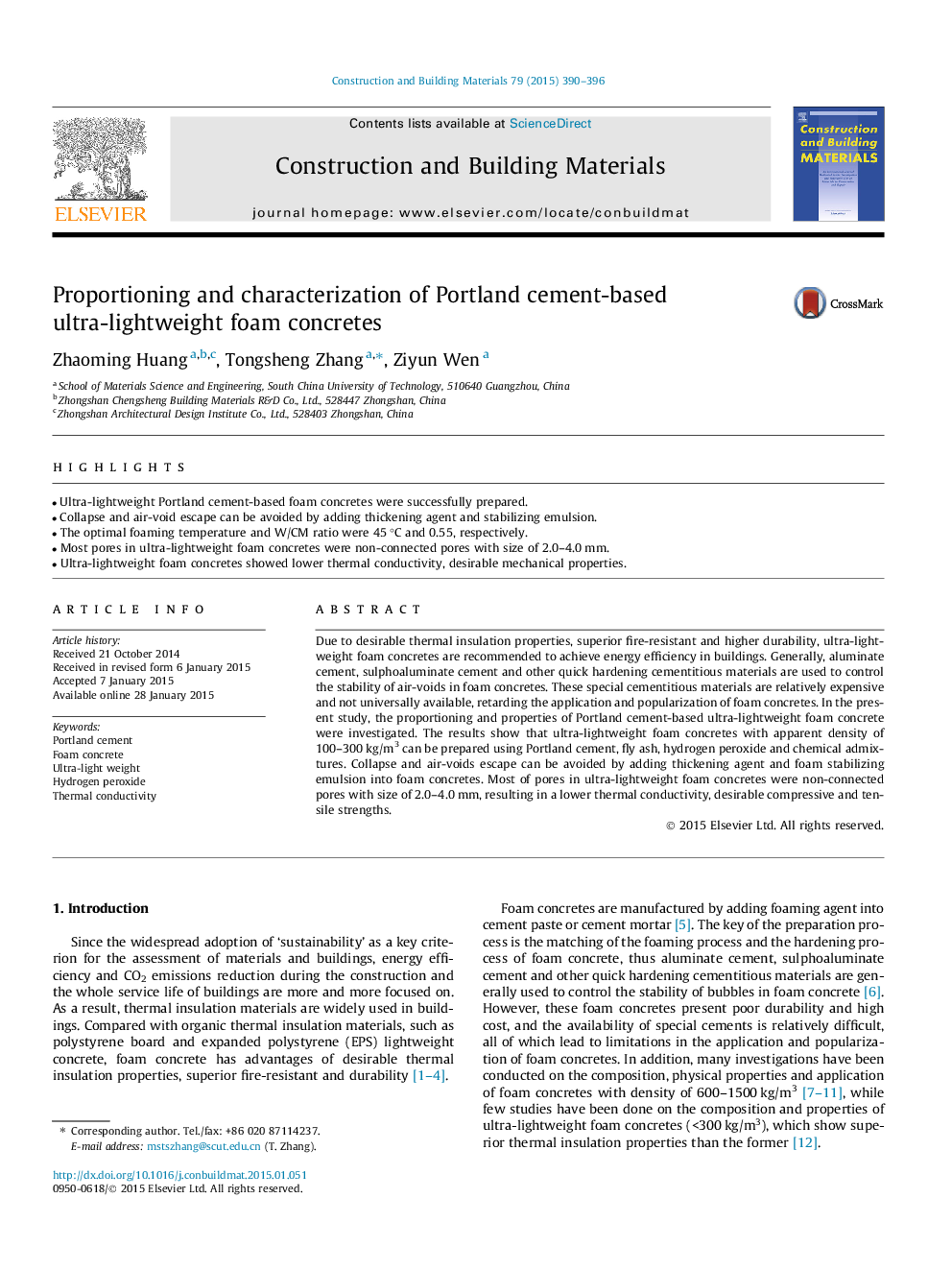| کد مقاله | کد نشریه | سال انتشار | مقاله انگلیسی | نسخه تمام متن |
|---|---|---|---|---|
| 257211 | 503579 | 2015 | 7 صفحه PDF | دانلود رایگان |
• Ultra-lightweight Portland cement-based foam concretes were successfully prepared.
• Collapse and air-void escape can be avoided by adding thickening agent and stabilizing emulsion.
• The optimal foaming temperature and W/CM ratio were 45 °C and 0.55, respectively.
• Most pores in ultra-lightweight foam concretes were non-connected pores with size of 2.0–4.0 mm.
• Ultra-lightweight foam concretes showed lower thermal conductivity, desirable mechanical properties.
Due to desirable thermal insulation properties, superior fire-resistant and higher durability, ultra-lightweight foam concretes are recommended to achieve energy efficiency in buildings. Generally, aluminate cement, sulphoaluminate cement and other quick hardening cementitious materials are used to control the stability of air-voids in foam concretes. These special cementitious materials are relatively expensive and not universally available, retarding the application and popularization of foam concretes. In the present study, the proportioning and properties of Portland cement-based ultra-lightweight foam concrete were investigated. The results show that ultra-lightweight foam concretes with apparent density of 100–300 kg/m3 can be prepared using Portland cement, fly ash, hydrogen peroxide and chemical admixtures. Collapse and air-voids escape can be avoided by adding thickening agent and foam stabilizing emulsion into foam concretes. Most of pores in ultra-lightweight foam concretes were non-connected pores with size of 2.0–4.0 mm, resulting in a lower thermal conductivity, desirable compressive and tensile strengths.
Journal: Construction and Building Materials - Volume 79, 15 March 2015, Pages 390–396
